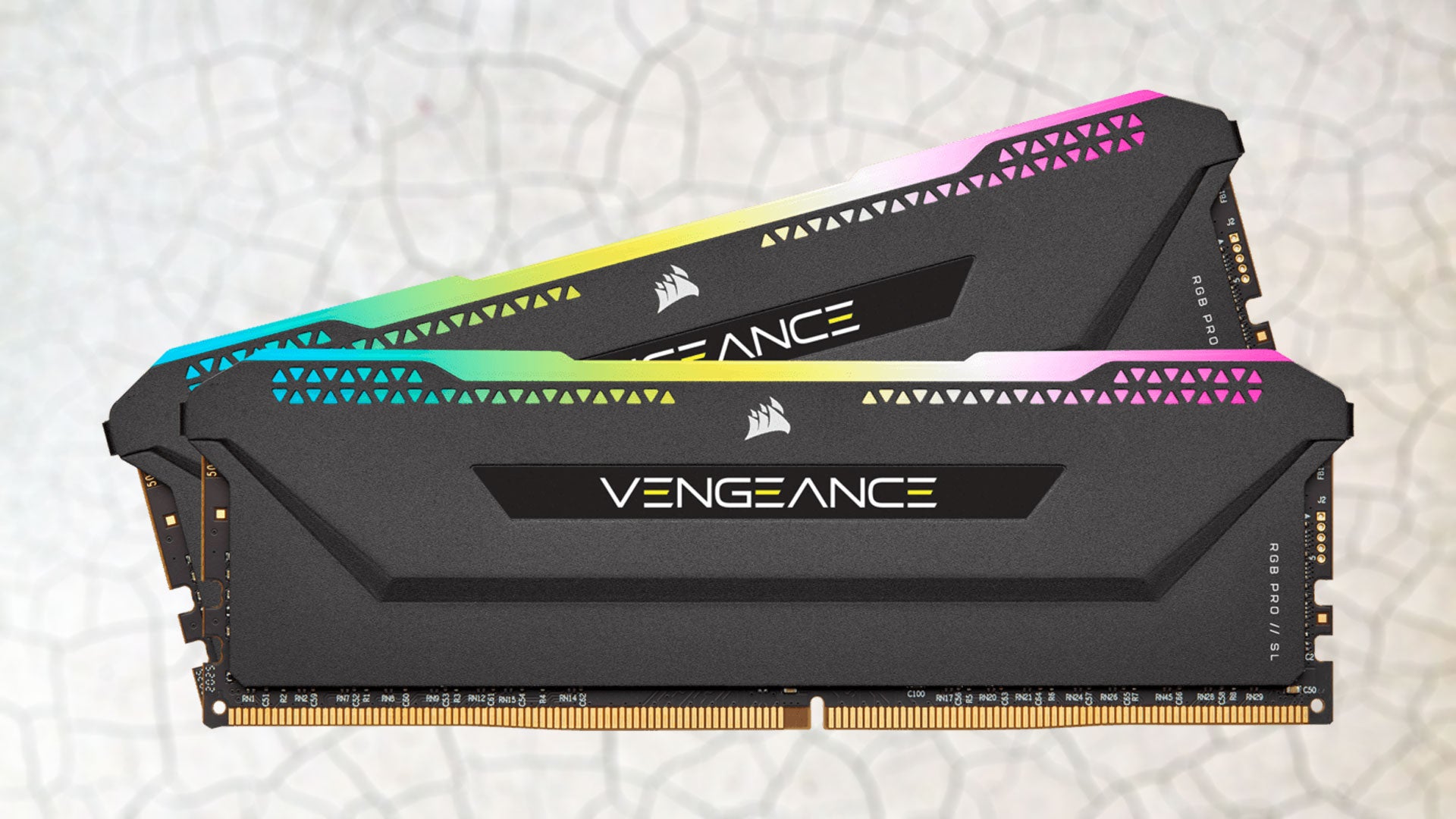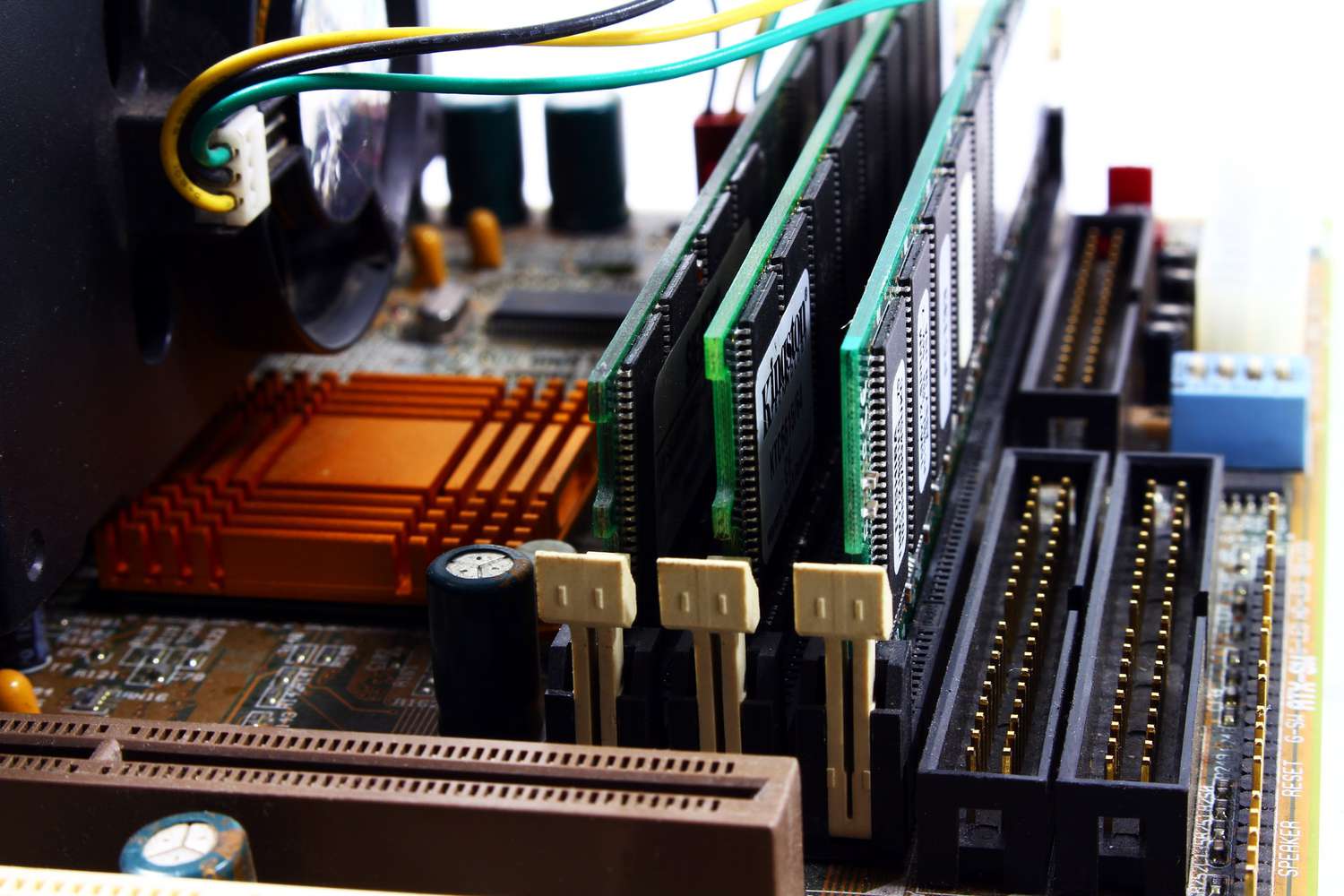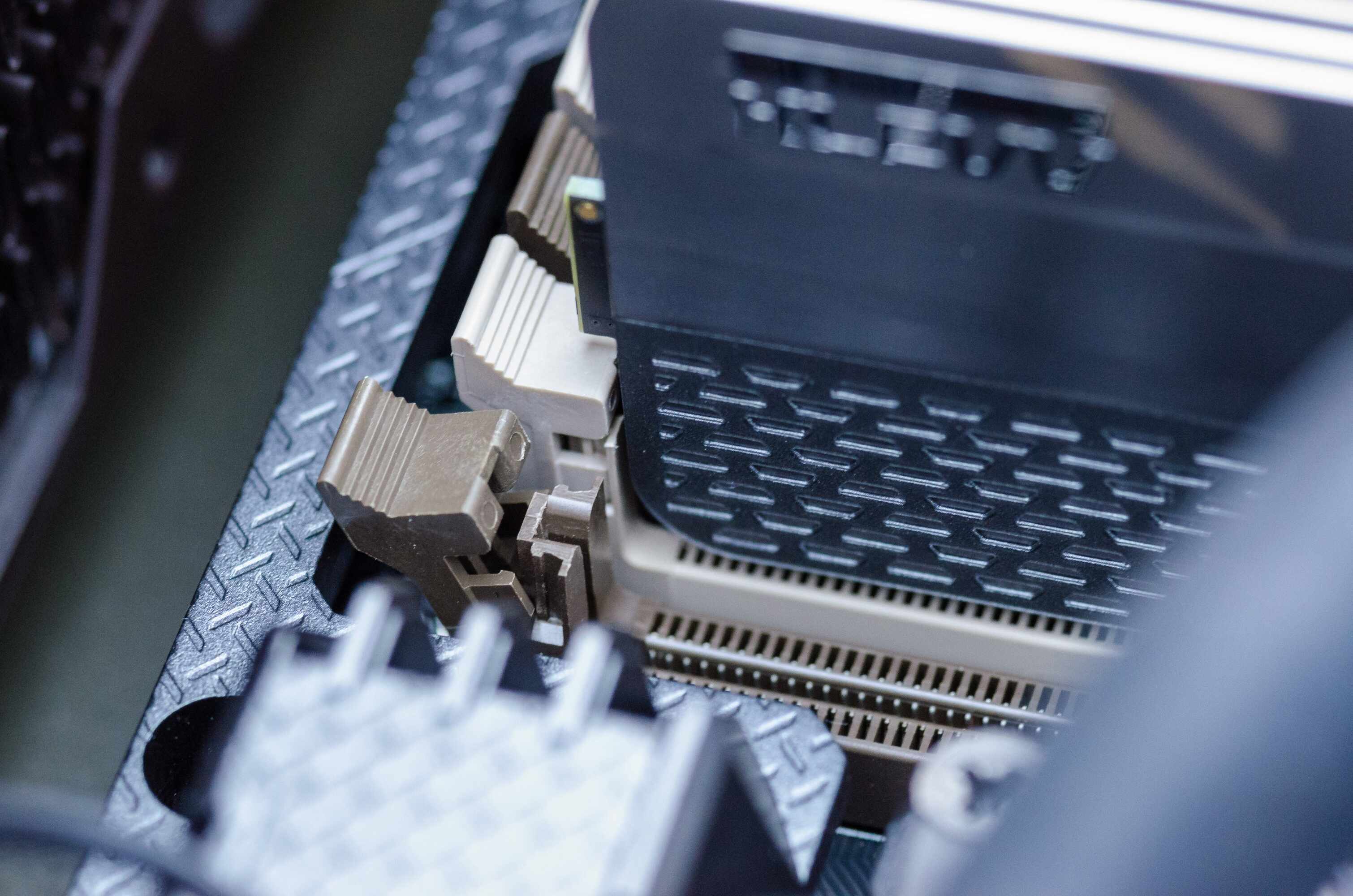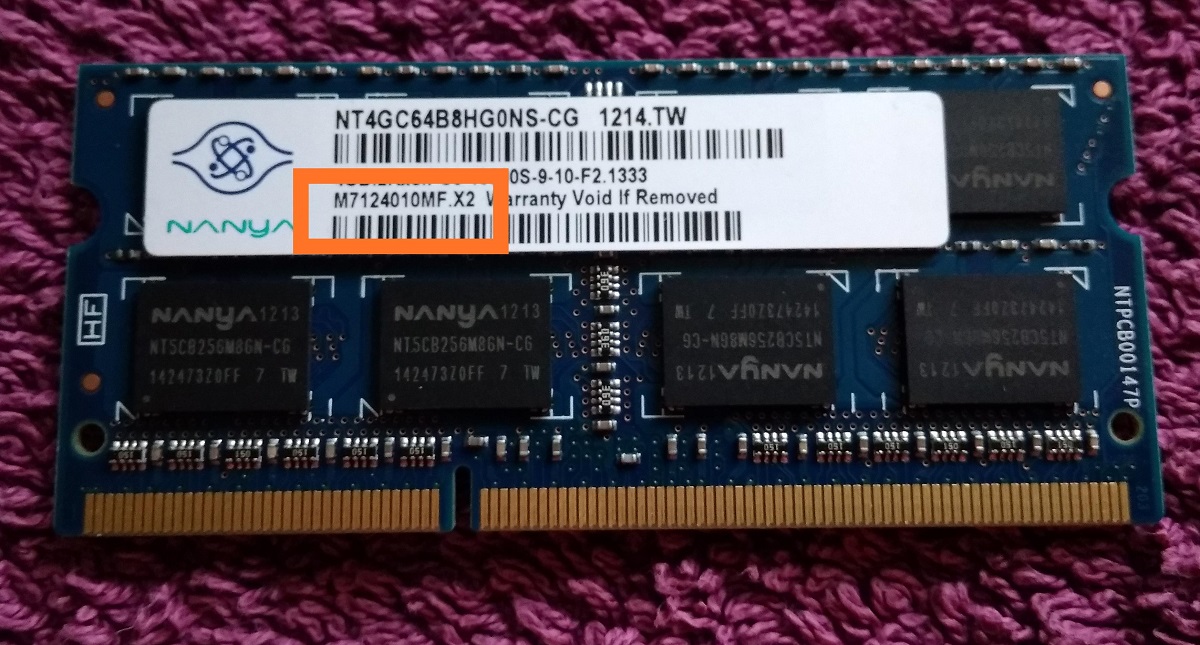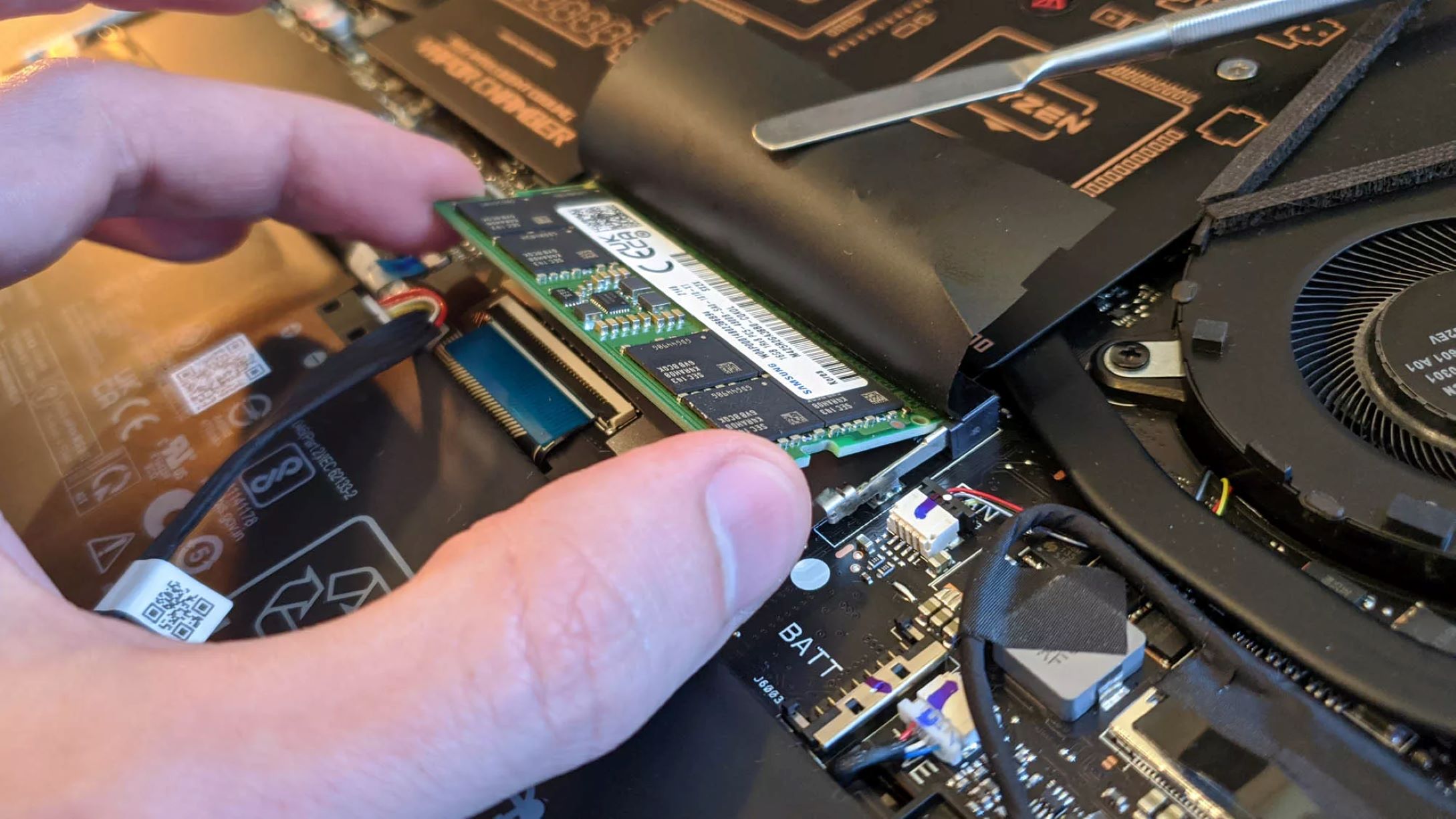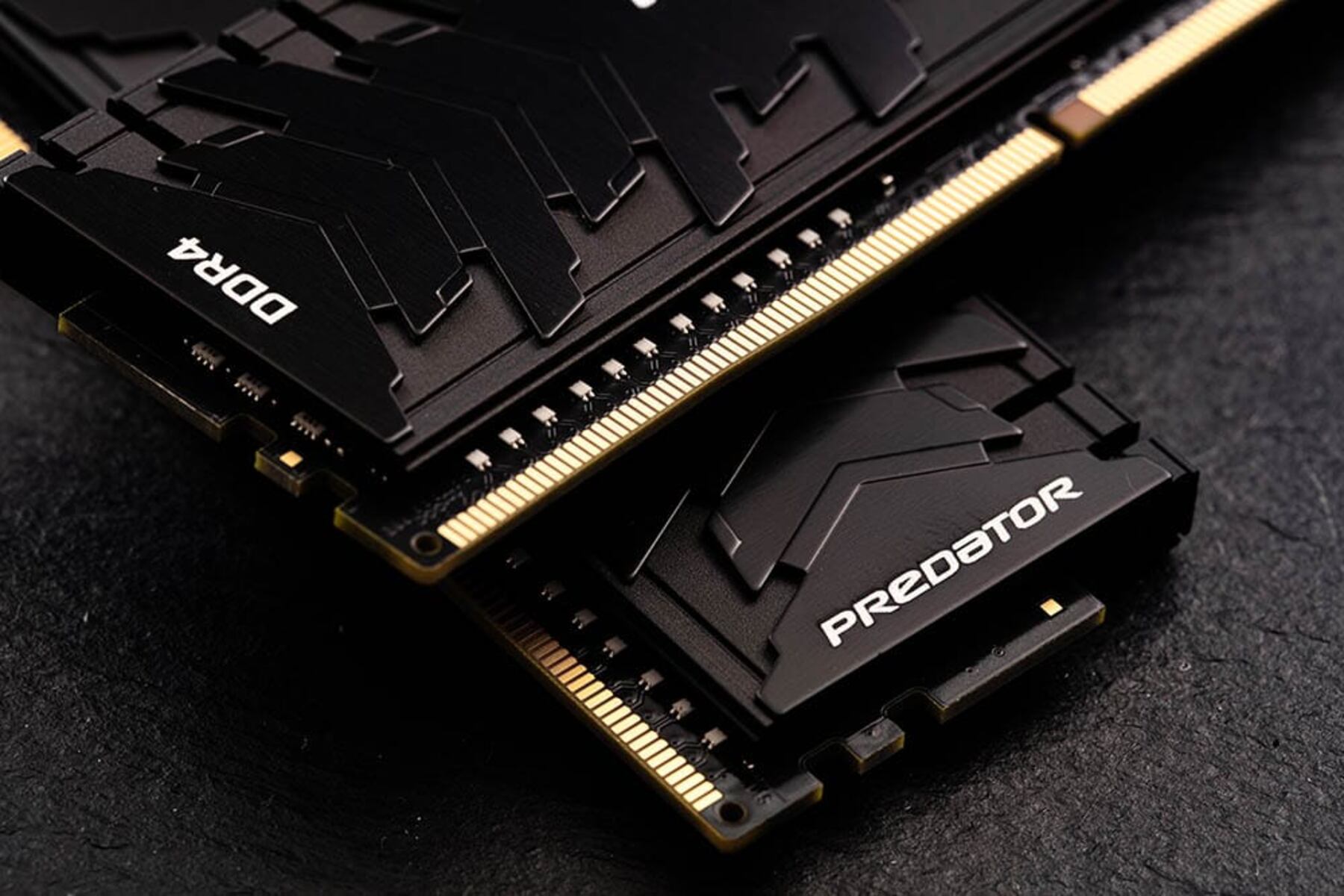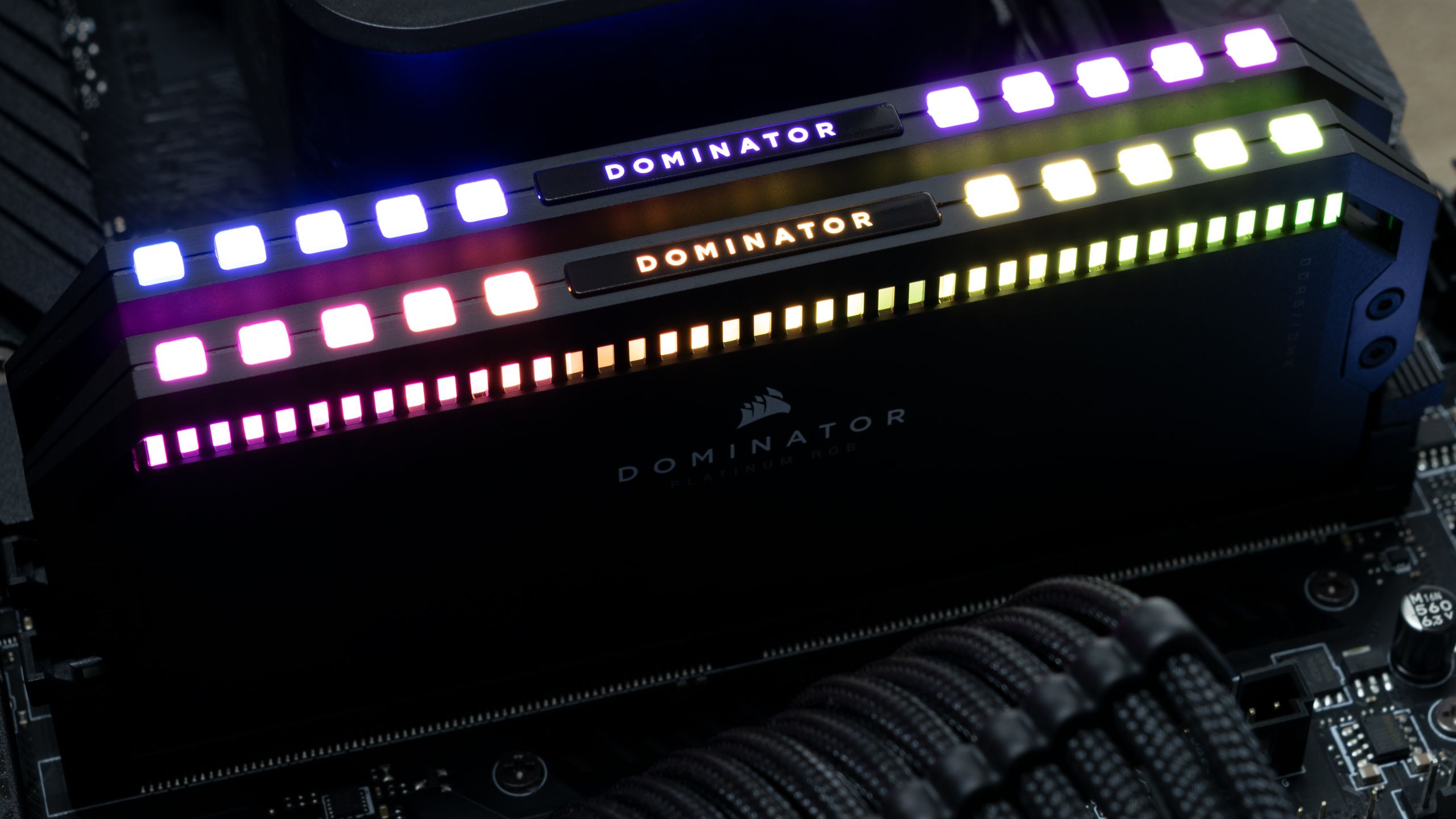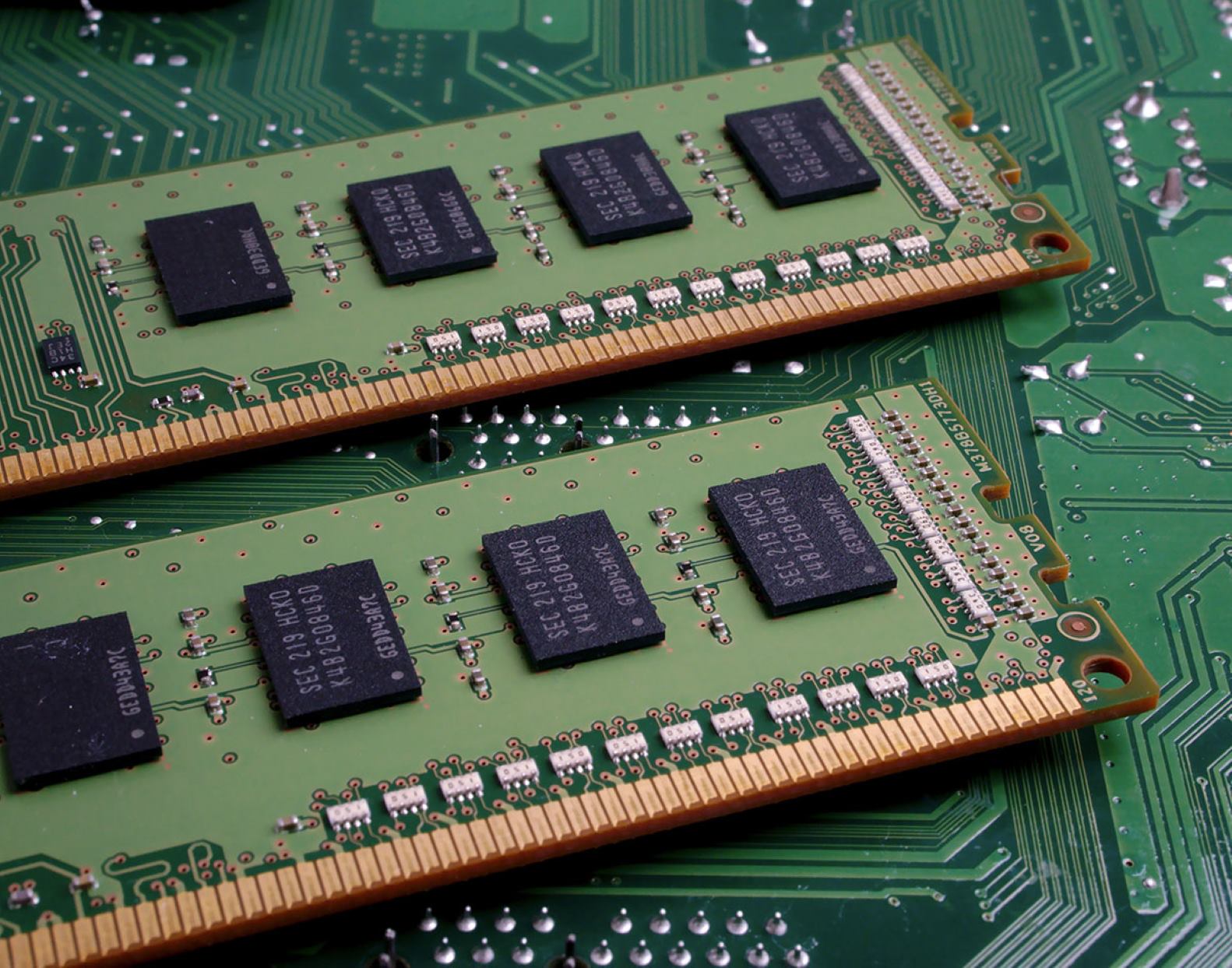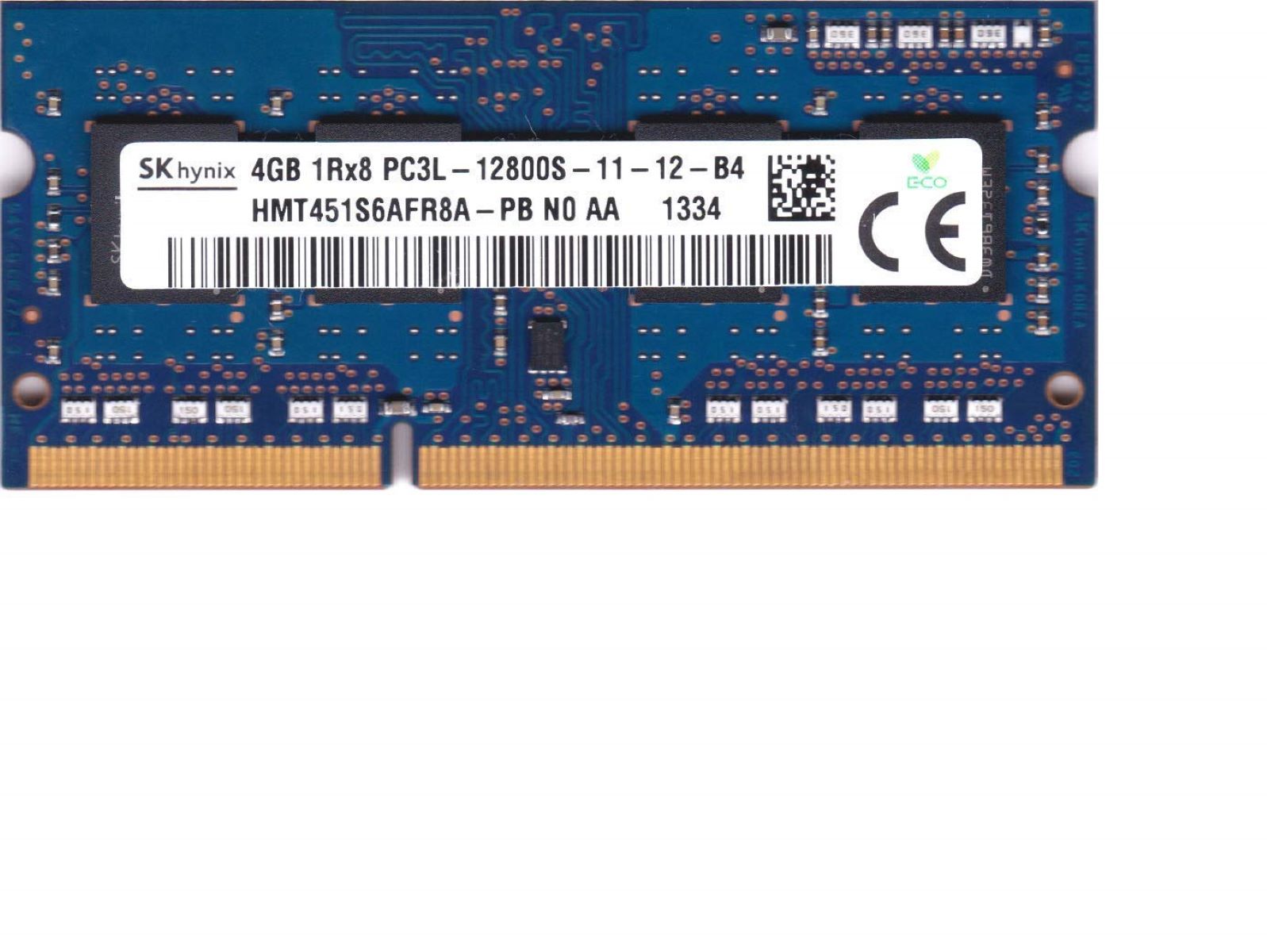Introduction
RAM (Random Access Memory) is a vital component of any computer system. It plays a crucial role in determining the performance and efficiency of your device. When it comes to upgrading or choosing the best RAM memory, there are several factors to consider. In this article, we will explore different types of RAM, connectors, speed, capacity, and compatibility with motherboards. Whether you are a gamer or a productivity enthusiast, understanding the nuances of RAM will help you make an informed decision.
RAM is responsible for storing and accessing data that is actively being used by the computer’s processor. Unlike the long-term storage provided by hard drives or solid-state drives, RAM provides temporary storage that is quickly accessible by the CPU. This allows for faster data processing and multitasking capabilities.
There are several types of RAM available in the market, including DDR, DDR2, DDR3, and the latest DDR4. The type of RAM you choose will depend on the compatibility with your motherboard and the specific requirements of your computer system. Additionally, the connectors on the motherboard, such as DIMM (Dual Inline Memory Module) or SODIMM (Small Outline Dual Inline Memory Module), will determine the physical compatibility of the RAM.
RAM speed is another critical factor to consider. It is measured in megahertz (MHz) and indicates the rate at which the RAM can transfer data. Higher RAM speeds result in faster data processing and improved overall system performance. However, it’s important to note that the RAM speed should be compatible with the motherboard and other system components for optimal functionality.
RAM capacity refers to the amount of data that can be stored in the memory. The capacity you choose will depend on your usage requirements. For gaming enthusiasts, higher RAM capacity is recommended to handle the demands of modern games and prevent lag. On the other hand, for productivity tasks such as video editing or graphic design, higher RAM capacity allows for smoother multitasking and faster rendering times.
Different Types of RAM
There are several types of RAM available in the market, each with its own set of specifications and compatibility requirements. Understanding the differences between these types of RAM is essential when upgrading or choosing the best memory for your computer system.
DDR (Double Data Rate) RAM was the first widely used type of RAM. Although it is not commonly found in modern systems, it is still used in some older computers. DDR2 RAM, which succeeded DDR, offered improved data transfer rates and lower power consumption. However, it has also become outdated and is rarely used in current systems.
DDR3 RAM, on the other hand, is still widely used today. It provides faster data transfer rates compared to DDR2 and offers better overall performance. DDR3 RAM is compatible with most modern motherboards and is available in various capacities ranging from 4GB to 32GB.
The latest and most advanced type of RAM is DDR4. It provides even faster data transfer rates, improved power efficiency, and higher capacity options. DDR4 RAM is designed for high-performance systems, such as gaming PCs and workstations. It supports speeds up to 3200MHz and capacities up to 128GB, making it ideal for resource-intensive tasks.
When choosing the type of RAM, it’s crucial to consider the compatibility with your motherboard. Not all motherboards support all types of RAM. Always check the motherboard specifications to ensure the RAM you choose is compatible. Additionally, be aware of the RAM voltage requirements. Some types of RAM, such as DDR3L, operate at a lower voltage compared to standard DDR3. Using incompatible RAM can result in system instability or failure to boot.
It’s worth noting that newer types of RAM, such as DDR4, may require a compatible motherboard and CPU. Older systems may not support DDR4 RAM, restricting your upgrade options. Before investing in DDR4 RAM, ensure that your system supports it to avoid compatibility issues.
Types of RAM Connectors
RAM connectors play a vital role in determining the physical compatibility between the RAM module and the motherboard. There are two main types of RAM connectors: DIMM (Dual Inline Memory Module) and SODIMM (Small Outline Dual Inline Memory Module).
DIMM connectors are the most common type and are typically used in desktop computers and servers. These connectors have a larger form factor and are physically larger compared to SODIMMs. DIMM modules usually have 168, 284, or 288 pins, depending on the type of RAM.
SODIMM connectors, on the other hand, are smaller in size and are commonly used in laptops, small form factor PCs, and some all-in-one computers. SODIMMs are about half the size of DIMMs and have fewer pins. They typically come in 72-pin or 144-pin configurations, depending on the type of RAM.
When choosing RAM for your system, it’s important to select the appropriate connector type. If you’re upgrading a desktop computer or server, you’ll likely need DIMM modules. Check your motherboard’s specifications or manual to determine the type of DIMM connector supported (e.g., DDR3 DIMM, DDR4 DIMM). Failure to choose the correct DIMM type can result in physical incompatibility.
If you’re upgrading a laptop or small form factor PC, SODIMM modules will be the preferred choice. Refer to your laptop’s documentation or manufacturer’s website to find out the specific SODIMM type supported (e.g., DDR3 SODIMM, DDR4 SODIMM). It’s important to note that SODIMMs are not compatible with DIMM slots and vice versa, so be sure to choose the correct connector type for your system.
When installing RAM modules, it’s crucial to handle them with care and avoid applying excessive force. Align the notches or notches on the RAM module with the slot on the motherboard and gently press the module into place until it clicks or locks securely. Improper installation can cause damage to the RAM module or the motherboard, leading to system instability or failure to boot.
RAM Speed
RAM speed, measured in megahertz (MHz), refers to the rate at which data can be transferred to and from the memory module. Higher RAM speeds typically result in faster data processing and improved system performance. However, it’s important to consider the compatibility between the RAM speed and other components of your computer system.
The RAM speed that your system can support is determined by the motherboard and the CPU. It’s crucial to check the motherboard’s specifications or user manual to identify the supported RAM speed. Some motherboards have specific speed limitations, while others offer overclocking capabilities to achieve higher RAM speeds. CPUs also have a maximum recommended RAM speed, so be sure to consider this when selecting RAM for your system.
It’s worth noting that not all applications benefit equally from higher RAM speeds. Tasks such as gaming, video editing, and 3D rendering can benefit from faster RAM, as they involve a large amount of data processing. On the other hand, general productivity tasks like web browsing and document editing may not see significant improvements with higher RAM speeds.
When choosing RAM speed, it’s important to strike a balance between cost and performance. Higher RAM speeds tend to be more expensive, so consider your budget and usage requirements. If you’re mainly using your computer for everyday tasks, a moderate RAM speed will suffice. However, if you’re a gamer or a professional working with resource-intensive applications, investing in higher-speed RAM can provide a noticeable boost in performance.
Another factor to consider is the latency of the RAM. Latency, measured in timings like CL14 or CL16, refers to the time it takes for the RAM to respond to a request for data. Lower latency values indicate faster response times. It’s important to choose RAM modules with a combination of high speed and low latency for optimal performance. However, keep in mind that faster RAM speeds usually come with slightly higher latencies.
To summarize, RAM speed plays a significant role in determining the performance of your computer system. It’s essential to choose RAM modules that are compatible with your motherboard and CPU, and consider your specific usage requirements. Balancing the RAM speed, latency, and budget will help you achieve an optimal combination for your needs.
RAM Capacity
RAM capacity refers to the amount of data that can be stored and accessed by the computer system at any given time. The capacity of RAM you choose will depend on the specific requirements of your computer usage, including the types of applications you run and the multitasking capabilities you need.
For everyday computing tasks such as web browsing, document editing, and email, a minimum RAM capacity of 4GB is typically sufficient. This allows the computer to handle these tasks smoothly without experiencing significant lag or slowdowns. However, as applications and operating systems become more demanding, it’s recommended to have a minimum of 8GB of RAM for a smoother user experience.
For gamers, graphic designers, and video editors, a higher RAM capacity is crucial. These applications often require significant amounts of memory to handle complex graphics, rendering, and multitasking. A minimum of 16GB is usually recommended for gaming, while professionals working with resource-intensive applications may benefit from 32GB or more.
It’s important to note that the RAM capacity you choose should also align with the capabilities of your operating system. Older versions of Windows, such as Windows 7 or 8, may not fully utilize RAM capacities higher than 16GB. Ensure that your operating system is compatible with the RAM capacity you intend to install to avoid any wastage or compatibility issues.
When selecting RAM capacity, it’s crucial to consider future expandability and upgrade options. If your motherboard supports multiple RAM slots, choosing a lower capacity initially allows for easy and cost-effective upgrades in the future. Check the maximum RAM capacity supported by your motherboard to determine the potential for future expansion.
Lastly, consider the overall budget for your computer system. RAM prices tend to increase with higher capacities, so it’s important to strike a balance between your budget and your performance needs. Evaluate your usage requirements carefully to determine the appropriate RAM capacity that offers a good balance of performance and affordability.
In summary, RAM capacity is an important consideration when choosing memory for your computer system. It should align with the specific tasks you perform, the applications you use, and the requirements of your operating system. By selecting the right RAM capacity, you can ensure optimal performance and the ability to handle memory-intensive tasks effectively.
Choosing RAM for Gaming
When it comes to gaming, having the right RAM can significantly impact your gaming experience by improving loading times, reducing lag, and enhancing overall performance. Here are some factors to consider when choosing RAM for gaming.
Capacity: Gaming requires a significant amount of memory to handle the demands of modern games. It is recommended to have a minimum of 16GB of RAM to ensure smooth gameplay and prevent any potential slowdowns. Higher capacity RAM, such as 32GB or even 64GB, can provide even better performance for resource-intensive games and future-proof your system.
Speed: RAM speed plays a crucial role in gaming performance. It is recommended to choose RAM with higher clock speeds, usually ranging from 3000MHz to 3600MHz or higher, for optimal gaming performance. Faster RAM speeds allow for quicker data transfer between the RAM and the CPU, resulting in reduced loading times and improved in-game responsiveness.
Timing: The timings or latency of RAM, represented by values such as CL14 or CL16, also affect gaming performance. Lower latency values indicate faster response times. It’s recommended to choose RAM modules with lower latency values for improved gaming performance, although the overall impact may be less noticeable compared to capacity and speed.
Compatibility with Motherboard: Before purchasing RAM for gaming, ensure that it is compatible with your motherboard. Check the motherboard specifications to determine the supported RAM type (e.g., DDR4), maximum capacity, and supported speeds. Investing in high-speed RAM without compatibility can result in wasted money and lack of functionality.
Overclocking Potential: If you are an enthusiast gamer looking to squeeze out every bit of performance from your system, consider RAM that has good overclocking potential. Some RAM modules are designed to handle overclocking, allowing you to achieve even higher speeds than their default specifications. However, keep in mind that overclocking RAM may require additional cooling measures and can void warranties, so proceed with caution.
In addition to these factors, it’s essential to consider your overall gaming setup. If you have a powerful graphics card, a high-resolution monitor, and a fast CPU, investing in higher-end RAM can ensure that your entire system is balanced and optimized for gaming performance.
In summary, choosing the right RAM for gaming involves considering factors such as capacity, speed, timing, compatibility with your motherboard, and potential for overclocking. A combination of higher capacity, faster clock speeds, and lower latency values will provide the best gaming experience. By understanding your gaming needs and choosing the appropriate RAM, you can enhance your gaming performance and enjoy smoother gameplay.
Choosing RAM for Productivity
When it comes to productivity tasks such as video editing, graphic design, programming, or multi-tasking with several applications, having the right RAM can significantly improve your workflow and overall productivity. Here are some factors to consider when choosing RAM for productivity.
Capacity: Productivity tasks often involve working with large files and resource-intensive applications. It is recommended to have a higher RAM capacity to handle these demands effectively. A minimum of 16GB of RAM is generally recommended for smooth multitasking and efficient handling of productivity-related tasks. However, professionals working with extensive multimedia files or running virtual machines may benefit from having 32GB or more for better performance and responsiveness.
Speed: While RAM speed does play a role in productivity tasks, it is not as crucial as capacity. Opting for RAM with faster clock speeds can enhance responsiveness and reduce rendering times, especially when working with large files. RAM speeds ranging from 2400MHz to 3200MHz are typically sufficient for productivity tasks. However, it’s important to ensure that your chosen RAM speed is compatible with your motherboard to avoid any issues.
Timing: Like with gaming, lower latency values indicate faster response times for RAM. When working with productivity applications, lower latency RAM can provide smoother performance, especially in scenarios where there is heavy data processing. While the impact may not be as noticeable as with gaming, it can still contribute to overall responsiveness and efficiency.
Compatibility with Motherboard: Before purchasing RAM for productivity tasks, make sure it is compatible with your motherboard. Check the motherboard specifications to determine the supported RAM type (e.g., DDR4) and maximum capacity. Additionally, ensure that the RAM is compatible with the CPU and other system components for optimal functionality.
Consider Workflow and Application Requirements: Take into account the specific productivity applications you use and their memory requirements. Some applications may require a certain amount of RAM to perform efficiently, and having enough headroom for multitasking can greatly improve your workflow. Evaluate your typical workflow and the demands of the applications you use to determine the appropriate RAM capacity for your needs.
By choosing the right RAM for productivity tasks, you can experience smoother multitasking, faster file loading and saving, and overall improved efficiency. Consider factors such as capacity, speed, timing, compatibility with your motherboard, and the requirements of your productive applications to make an informed decision. Remember that investing in higher-end RAM can result in a more responsive and efficient computing experience, ultimately enhancing your productivity.
Overclocking RAM
Overclocking RAM involves increasing the frequency (clock speed) of the memory beyond its default specifications to achieve higher performance. While overclocking RAM can provide noticeable improvements in system responsiveness and data processing speeds, it’s important to approach it with caution and ensure that your system can handle the increased demands.
Overclocking RAM requires accessing the BIOS settings of your computer. The specific steps may vary depending on your motherboard manufacturer and model. Always consult your motherboard’s user manual or manufacturer’s website for detailed instructions on how to safely overclock your RAM.
Before attempting to overclock your RAM, make sure to have adequate cooling in place. Higher clock speeds generate more heat, and without proper cooling, it can lead to stability issues and potential damage to your RAM or other system components. Consider installing additional case fans or a quality CPU cooler to maintain optimal operating temperatures.
Once you’ve ensured appropriate cooling, access the BIOS and find the settings related to RAM frequency and timing. You may need to enable advanced settings or find specific RAM overclocking options. Start by gradually increasing the RAM frequency in small increments, such as 100MHz, and test for stability using tools like Prime95 or MemTest86. If the system passes stability tests, continue increasing the frequency until you achieve the desired performance or reach the maximum stable overclock.
It’s important to note that not all RAM modules can be overclocked to the same extent. Factors such as the quality of the RAM chips and the PCB design can influence the maximum achievable overclock. Additionally, some RAM modules are explicitly designed for overclocking and may have better overclocking potential.
Keep in mind that overclocking RAM may void the warranty of your RAM module, so proceed at your own risk. Additionally, unstable overclocks can result in system crashes, data corruption, or even damage to your hardware. Always monitor your system’s performance and temperatures during and after overclocking to ensure everything is functioning within safe parameters.
It’s also worth noting that the performance gains from overclocking RAM may vary depending on the specific tasks and applications you use. While tasks involving heavy data processing and memory-intensive applications can benefit from overclocked RAM, day-to-day computing tasks and gaming may see only marginal improvements. Consider your specific usage requirements and evaluate whether the potential gains from overclocking justify the risks and effort involved.
In summary, overclocking RAM can provide performance improvements by increasing the memory frequency. However, it should be approached with caution, ensuring proper cooling and understanding the risks involved. Follow the guidelines provided by your motherboard manufacturer, monitor system stability and temperatures, and only proceed if you are comfortable with the potential risks and benefits.
Dual-Channel vs. Single-Channel RAM
When it comes to memory configurations in computers, the terms “dual-channel” and “single-channel” refer to how the RAM modules are installed and accessed by the processor. Understanding the differences between dual-channel and single-channel RAM can help you make an informed decision when upgrading your memory.
In a single-channel RAM configuration, the computer accesses and transfers data through a single RAM module. This means that the processor can read or write data from one memory module at a time. While this setup is more common in budget systems or older computers, it still functions adequately for basic computing tasks.
In a dual-channel RAM configuration, two identical RAM modules are installed in the appropriate memory slots on the motherboard. With dual-channel, the processor can access and transfer data simultaneously from both memory modules, effectively doubling the memory bandwidth. This results in improved performance and faster data transfer rates, especially in tasks that are memory-intensive, such as video editing, 3D rendering, and gaming.
The increased memory bandwidth in dual-channel configurations allows for higher data throughput and faster access to memory. This can result in quicker loading times, smoother multitasking, and improved overall system responsiveness. However, it’s important to note that the performance gains from dual-channel RAM may not be significant in everyday computing tasks or applications that aren’t explicitly memory-intensive.
To take advantage of dual-channel RAM, it’s crucial to install the RAM modules correctly in the compatible memory slots on the motherboard. Consult the motherboard’s user manual or manufacturer’s website to identify the appropriate slots for dual-channel operation. The RAM modules should be of the same capacity, speed, and timing to ensure proper functionality in a dual-channel configuration.
It’s worth mentioning that dual-channel RAM is not limited to two modules only. Some motherboards support quad-channel configurations, where four identical RAM modules can be utilized simultaneously. Quad-channel RAM can provide even greater memory bandwidth and higher overall system performance for advanced workstations or power users who require maximum memory capabilities.
When choosing between single-channel and dual-channel RAM, consider your specific usage requirements and budget. If you’re primarily engaged in basic computing tasks like web browsing, word processing, and email, single-channel RAM may suffice. However, for gaming, multimedia editing, or other memory-intensive tasks, dual-channel RAM is recommended to realize the full potential of your system.
In summary, dual-channel RAM offers improved memory bandwidth and faster data transfer rates compared to single-channel RAM configurations. It is particularly beneficial for memory-intensive tasks and applications that require high-performance memory access. Consider your computing needs and budget when choosing between single-channel and dual-channel RAM, and ensure that your motherboard supports the desired configuration.
Compatibility with Motherboard
When selecting RAM for your computer system, ensuring compatibility with your motherboard is crucial. The motherboard acts as the backbone of your system and dictates the types of RAM modules and configurations that can be used. Here are some key factors to consider for RAM compatibility with your motherboard.
RAM Type: Check the specifications of your motherboard to determine the supported RAM type. Common types include DDR3, DDR4, and the newer DDR5. Using an incompatible RAM type can lead to either physical incompatibility or failure to boot.
RAM Speed: Determine the supported RAM speed by referring to the motherboard’s specifications. Ensure that the RAM speed you choose aligns with the maximum supported speed of your motherboard. Using RAM modules with higher speeds than what the motherboard can handle may result in the system downclocking the RAM to the maximum supported speed or not recognizing the RAM at all.
RAM Capacity: Check the maximum RAM capacity supported by your motherboard. This information can usually be found in the motherboard manual or on the manufacturer’s website. Make sure that the total capacity of the RAM modules you intend to install does not exceed the motherboard’s specified limit.
Number of RAM Slots: Take note of the number of RAM slots available on your motherboard. This will determine the maximum number of RAM modules you can install. Some motherboards may have only two slots, while others may have four or more. Consider your future upgrade plans and ensure that the motherboard has enough slots to accommodate your desired RAM configuration.
Dual-Channel or Quad-Channel Support: Certain motherboards support dual-channel or quad-channel memory configurations. If you plan to utilize dual-channel or quad-channel memory, ensure that your motherboard explicitly supports these configurations. Install the RAM modules in the correct slots to enable the desired memory channel configuration.
Operating System Compatibility: Lastly, ensure that your chosen RAM modules and motherboard are compatible with your operating system. Most modern operating systems are compatible with DDR3, DDR4, and DDR5 RAM. However, older operating systems may have limitations on the maximum amount of RAM they can address.
By verifying RAM compatibility with your motherboard, you can avoid potential issues such as system instability, failure to boot, or wasted investment. Refer to the motherboard manual or manufacturer’s website for detailed information on RAM compatibility and installation guidelines specific to your motherboard model.
In summary, it’s crucial to ensure RAM compatibility with your motherboard to ensure proper functionality and performance. Consider the RAM type, speed, capacity, number of RAM slots, support for dual-channel or quad-channel configurations, and compatibility with your operating system. By doing so, you can select RAM modules that are fully compatible with your motherboard, allowing for optimal performance and hassle-free operation of your computer system.
Upgrading RAM
Upgrading RAM is one of the most effective ways to improve the performance and responsiveness of your computer system. Whether you’re experiencing slowdowns, lag while multitasking, or simply want to future-proof your system, a RAM upgrade can provide a significant boost in overall performance. Here are some key considerations when upgrading your RAM.
Identify System Requirements: Assess your current system to determine the maximum RAM capacity and type supported by your motherboard. Check your motherboard manual or manufacturer’s website for detailed specifications. It’s important to choose RAM modules that are compatible with your system to avoid incompatibility issues.
Determine Upgrade Needs: Evaluate your usage requirements and determine how much RAM you need. If you’re experiencing frequent slowdowns, freezing, or crashes during multitasking or resource-intensive tasks, it’s likely time for a RAM upgrade. Consider the specific applications you use and the amount of memory they require to make an informed decision.
Choose the Right RAM: Select RAM modules that align with your system requirements. Consider factors such as capacity, speed, timing, and compatibility with your motherboard. Opt for higher-capacity RAM if you frequently work with large files or multitask with memory-intensive applications. For optimal performance, choose RAM with higher clock speeds and lower latency values.
Install RAM Properly: Before installing the new RAM, ensure that the computer is powered off and disconnected from the power source. Locate the RAM slots on the motherboard and carefully insert the RAM modules, ensuring that they are aligned with the notches. Apply gentle pressure until the modules are securely in place. Consult your motherboard’s manual for specific installation instructions or watch online tutorials if you need guidance.
Test for Compatibility and Stability: Once the new RAM is installed, power on the computer and verify that it is detected in the BIOS or system settings. Run diagnostic tools such as MemTest86 to check for any errors or stability issues. If you encounter any problems, double-check the installation, re-seat the RAM modules, or try different configurations.
Utilize Dual-Channel Configuration: If your motherboard supports dual-channel memory, install memory modules in pairs. This enables faster data transfer rates and improved overall performance. Refer to your motherboard’s manual to identify the correct memory slots for dual-channel configuration.
Consider Future Upgrades: Keep in mind that RAM upgrades should align with your long-term goals. Consider future expansion possibilities by selecting RAM modules with available slots for additional modules. This will allow for easy upgrades in the future without unnecessary complications or expenses.
In summary, upgrading RAM can greatly enhance the performance and responsiveness of your computer system. By identifying your system requirements, evaluating your needs, selecting the right RAM modules, and properly installing them, you can enjoy improved multitasking capabilities and smoother operation. Be sure to test for compatibility and stability, and keep future upgrade possibilities in mind for a more efficient and future-proof system.
Conclusion
Choosing the best RAM memory for your computer system is crucial for optimal performance and efficiency. By considering factors such as RAM types, connectors, speed, capacity, compatibility with the motherboard, and your specific usage requirements, you can make an informed decision that meets your needs and budget.
Different types of RAM, such as DDR3 and DDR4, offer varying levels of performance and compatibility. Selecting the appropriate RAM type ensures seamless integration with your motherboard and other system components. Additionally, understanding the differences between DIMM and SODIMM connectors helps ensure physical compatibility with your computer system.
RAM speed and capacity play key roles in determining the performance of your system. Higher RAM speeds, along with lower latency values, can result in faster data transfer rates and improved overall system responsiveness. Meanwhile, choosing an adequate RAM capacity is essential for handling resource-intensive tasks and accommodating your multitasking needs.
Compatibility with your motherboard is critical when selecting RAM memory. Checking your motherboard’s specifications, including supported RAM type, maximum capacity, and dual-channel support, is necessary to ensure proper functionality. Additionally, verifying compatibility with your operating system guarantees a seamless experience without any limitations or conflicts.
Whether you are a gamer seeking to enhance your gaming performance or a productivity enthusiast looking for smoother multitasking capabilities, understanding your specific requirements is vital. Consider factors such as RAM speed, capacity, and timing to make the most suitable choice for your needs.
Upgrading RAM offers a cost-effective way to improve the performance of your computer system. By identifying your system’s requirements, choosing the right RAM modules, and ensuring proper installation and compatibility, you can benefit from faster data processing, reduced lag, and enhanced productivity.
In conclusion, careful consideration of the different aspects of RAM memory will enable you to select the best option for your unique needs. By making an informed decision, you can maximize the performance and efficiency of your computer system, whether you are a gamer, a professional, or an everyday user. Choose wisely and enjoy the enhanced capabilities and seamless user experience that a well-chosen RAM memory configuration can provide.







